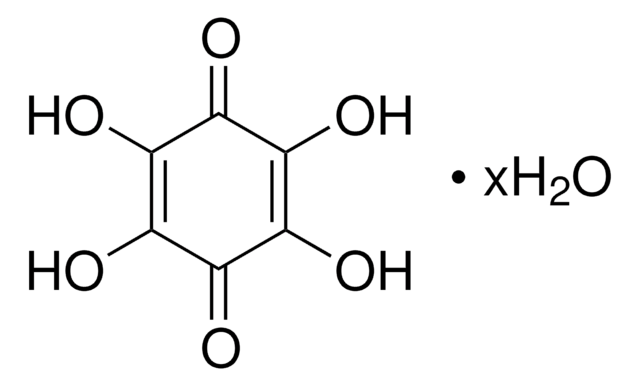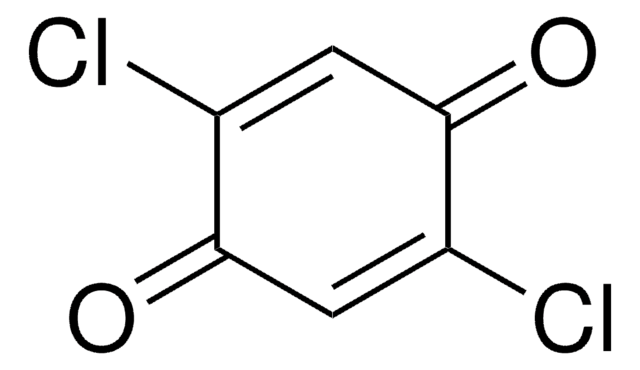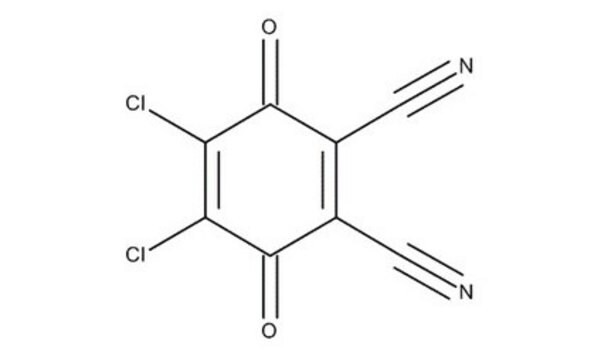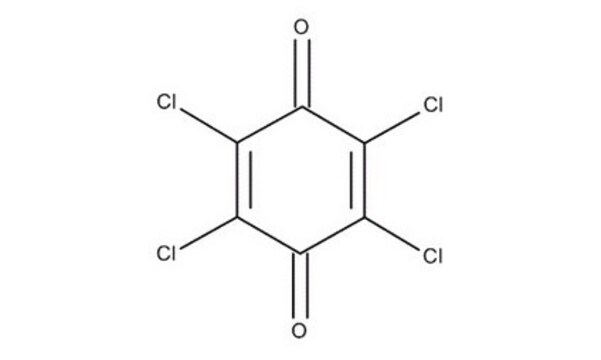C8136
Chloranilic acid
≥98%
Synonym(s):
2,5-Dichloro-3,6-dihydroxy-2,5-cyclohexadiene-1,4-dione, 2,5-Dichloro-3,6-dihydroxy-p-benzoquinone, NSC 6108, NSC 97383
About This Item
Recommended Products
Assay
≥98%
form
powder
mp
≥300 °C (lit.)
SMILES string
OC1=C(Cl)C(=O)C(O)=C(Cl)C1=O
InChI
1S/C6H2Cl2O4/c7-1-3(9)5(11)2(8)6(12)4(1)10/h9,12H
InChI key
IPPWILKGXFOXHO-UHFFFAOYSA-N
Looking for similar products? Visit Product Comparison Guide
Application
- Acting as a proton donor in reactions studying dimensionality control
- Synthesis of dimethylbipyridyl complexes
- Synthesis of (nonylbenzimidazolylmethyl)benzene for preparation of neutral altitudinal rotor-shaped dirhenium metallacycles
- Charge-transfer reactions with metoprolol tartrate
- Salt formation with organic bases
- Synthesis of osmium metalla-rectangles with anticancer activity
Signal Word
Warning
Hazard Statements
Precautionary Statements
Hazard Classifications
Eye Irrit. 2 - Skin Irrit. 2 - STOT SE 3
Target Organs
Respiratory system
Storage Class Code
11 - Combustible Solids
WGK
WGK 3
Flash Point(F)
Not applicable
Flash Point(C)
Not applicable
Personal Protective Equipment
Certificates of Analysis (COA)
Search for Certificates of Analysis (COA) by entering the products Lot/Batch Number. Lot and Batch Numbers can be found on a product’s label following the words ‘Lot’ or ‘Batch’.
Already Own This Product?
Find documentation for the products that you have recently purchased in the Document Library.
Customers Also Viewed
Our team of scientists has experience in all areas of research including Life Science, Material Science, Chemical Synthesis, Chromatography, Analytical and many others.
Contact Technical Service













